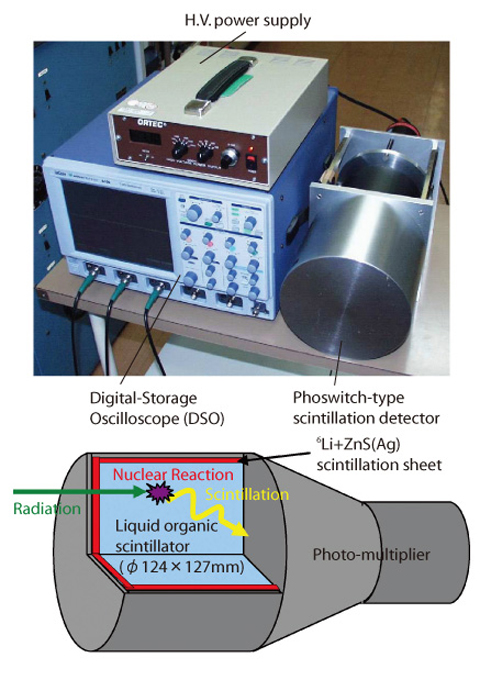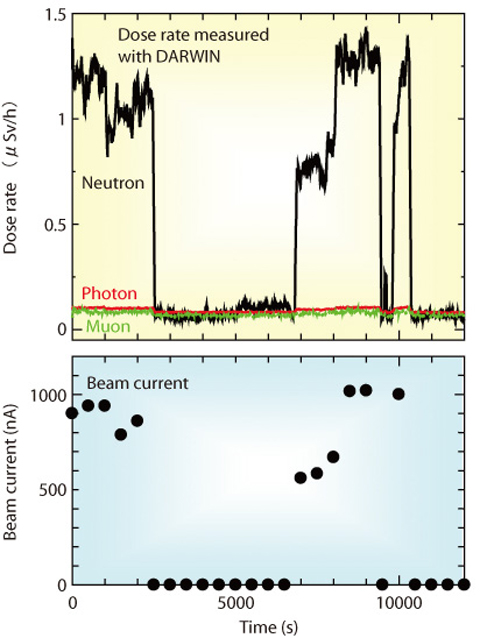
Fig.7-17 Picture of DARWIN (above) and schematic view of the phoswitch-type scintillation detector (below)

Fig.7-18 Dose rates measured with DARWIN in a high energy accelerator, and the accelerator beam current
Workers in high energy accelerator facilities are potentially exposed to high energy neutrons, photons and muons because of their high penetrability through radiation shielding. Measurement of doses from these particles is therefore of great importance for assuring radiation safety in the facilities. However, none of the existing devices are able to measure doses from all of these particles with satisfactorily accuracy.
With this specific problem in mind, we have developed a new device for monitoring doses in workspaces and environments surrounding high energy accelerator facilities, calling it DARWIN ( Dose monitoring system Applicable to various Radiations with WIde energy raNges). DARWIN is composed of (1) a phoswitch-type scintillation detector, which consists of liquid organic scintillator BC501A coupled with ZnS(Ag) scintillation sheets doped with 6Li, (2) a data acquisition system based on a Digital-Storage Oscilloscope (DSO), (3) and a high-voltage power supply. The picture of the system together with the schematic view of the phoswitch-type scintillation detector is shown in Fig.7-17. DARWIN is capable of monitoring doses from neutrons, photons and muons with energy ranges from thermal energy to 1 GeV, 150 keV to 100 MeV, and 1 MeV to 100 GeV, respectively, in real-time.
The performance of DARWIN was examined experimentally in several radiation fields. For example, the dose rates measured with DARWIN in the neutron detection room in the 800MeV proton accelerator facility LANSCE at Los Alamos National Laboratory is depicted in Fig.7-18, together with the beam current of the accelerator. It is apparent from the figure that the neutron dose rates correspond almost exactly to the beam current, indicating the accuracy and rapid response of DARWIN. It is also found from various experiments that DARWIN is superior to conventional radiation dose monitors in terms of accuracy, sensitivity, and applicable radiation types and their energy ranges. With these properties, DARWIN is expected to play a very important role for assuring radiation safety in high energy accelerator facilities.